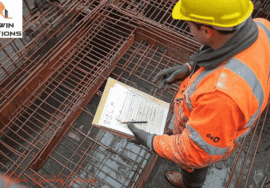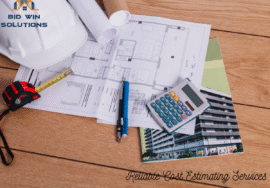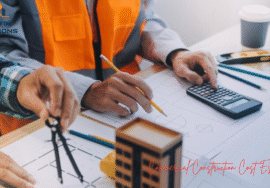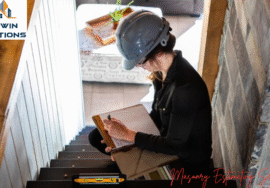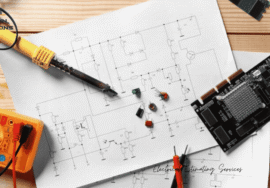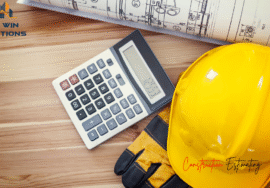
How to Estimate Water Damage Restoration Costs
Water damage can be a big headache for property owners. It could be caused by many different things, like heavy rain, leaky pipes, storm water, or broken appliances. No matter how it happens, water damage could weaken your building, cause the development of mold, and ruin your property, all of which can cost you.
So, getting a grip on what it might cost to fix the damage is super important for both homeowners and managers of commercial properties. In this article, we’ll break down the main things that go into figuring out Water Damage Restoration Cost, the factors that can affect the final price, and some practical tips to help keep your expenses under control.
What Exactly is Water Damage Restoration?
Water damage restoration is simply the process of restoring a property after it has been damaged by any form of water damage. It entails draining out the water, drying the property, sanitizing it, taking care of any other issues, and repairing wherever possible. The aim is not just to make everything look pretty again; it’s also to make sure there are no underlying issues that will lead to further problems down the line.
Why Is It So Important to Estimate the Costs?
Having a sense of cost estimating and how much the restoration expenses serves you in so many ways:
- You can get your finances in order for the work to proceed.
- If you must file an insurance claim, having the right information at hand is important.
- You can steer clear of unexpected expenses by knowing the fees charged.
- You can find a good bidding professional by comparing reasonable bids.
- The sooner you obtain an estimate, the sooner you can have repairs started. This reduces the risk of further damage and cost accumulation.
What Affects Water Damage Restoration Costs?
There is no set cost for water damage restoration because a number of variables are at work. Some of the most crucial things to keep in mind are:
- Type and Category of Water: There are three types of water damage, and each will cost you in different ways:
- Category 1 (Clean Water): This is water from a clean source, like a broken pipe or rain. Most often, it is easier to work with and cheaper.
- Category 2 (Grey Water): This type comes from an appliance like a washing machine or dishwasher and may have some type of contaminants. It needs to be properly cleaned so that it is safe.
- Category 3 (Black Water): This is the ugly stuff, like sewer or floodwater. Restoration in this situation would typically be most expensive because it’s working with hazardous materials.
- Amount of the Damage: How much area is affected? Restoration firms charge by the square meter, so the greater the damage, the more expensive it is. A little dampness in one corner is relatively cheap to rectify compared to a flooded room.
- Duration of Water Exposure: Time is of the essence when water starts building up. The longer it has been there for more than a couple of days, the higher the likelihood of mold, structural defects, and odors, which will be more expensive to repair in the future.
- Nature of Materials Impacted: Different materials have different costs. As an illustration, hardwood floors are replaceable if they are warped, but carpets waterlogged can actually store mold if they’re not dried quickly enough.
- Labor and Equipment Needs: Restoration is not simply a matter of drying something out; quite often, it entails needing to have specialized equipment and trained personnel to accomplish this task. It can include using water extractors, dehumidifiers, and even moisture absorbers to get a level where you know you are okay. Labor charges depend on where you’re located or if you want to have work done outside business hours.
- Insurance Coverage: Depending on your policy, all or a portion of the cost will be covered. You’ll need to know what caused the damage, how quickly you reported it, and if there are exclusions in your policy. Always double-check your insurance details and document what occurred for your claim.
How to Estimate Your Restoration Costs Step-by-Step
To give you a better idea of what the costs could be, here’s a simple way to break down restoration costs:

Step 1: Identify the Source and Type of Water: First, know whether the water is clean, grey, or black. This will inform you of the level of cleaning needed and how soon the work must be done.
Step 2: Measure the Damaged Area: Calculate how many square meters are affected. Don’t forget to count everything—rooms, walls, ceilings, and whatever else has been destroyed. Restoration companies usually charge between $15 and $30 per square meter depending on the type of work involved.
Step 3: Consider the Type of Work Involved: Standard services and their approximate costs include:
- Water removal: $100 – $500
- Dehumidifier rental (per day): $20 – $40
- Drywall repair: $10 – $25 per square meter
- Replacing flooring: $300 – $1,000+
- Mold removal: $500 – $3,000+
- Cleaning: $200 – $600
Step 4: Account for Additional Work: You might have some additional work you’d like done as well as the primary repairs, like structural drying, odor treatment, painting, or plumbing and electrical system repair. All of this adds to your total cost.
Step 5: Get Bids from Professionals: Call registered restoration companies and ask for written cost estimates that contain:
- A breakdown of everything they will do
- A projection of how long everything will take
- Any extra costs that might become necessary
- Warranties or guarantees of their work
- Watch out for low estimates; sometimes they exclude necessary steps, which can result in more troubles later on.
Tips to Make Your Restoration Cost Affordable
To keep those costs in control and stay within your budget, keep the following tips in mind:
- Get It Done Sooner: The sooner you do it, the better chance you’ll have to catch damage before it happens. Indeed, time is money.
- Save Receipts: Photograph and keep a meticulous record of damage and any receipt you receive. This is completely necessary to get assistance from your insurance company down the road.
- Prevent Repeat Problems: Spend money on leak detectors or sump pumps, and get your plumbing inspected frequently so you will not find yourself again in the same situation.
- Understand Your Insurance Policy: Ask your insurance company for clarification so that you fully understand what is covered under your policy. If you live in a flood area, investigate flood insurance coverage to protect yourself.
Final Thoughts: Plan Ahead
Dealing with water damage is never a nice thing, but knowing what you’re getting yourself into can really make it easier. It’s not as intimidating to estimate Water Damage Restoration Cost as it may appear if you take into consideration the type of water, the materials, the size of the area, and the services required.
You can save the money but also the hassle and stress that such situations entail by being proactive, keeping good records, and teaming up with trained professionals. Whether you need to have your home or business water damage restoration costs estimated, don’t hesitate to call on a certified restoration contractor for an accurate assessment and no-pressure estimate.




